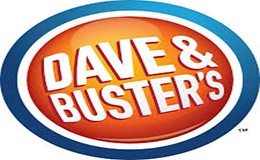What will you do if your child wants to start a gluten-free, paleo or vegan diet? Here are three steps to help discuss the choice with your child:
Step 1. Find Out Your Child’s Motivation
Before you react to the news, ask some questions to determine your child’s motivation. Is the purpose of the diet to lose weight? Have more energy? Address a health problem? Is the motivation because friends are adopting this diet? Is there a concern for animals and saving the planet?
Listen to the reasons behind your child’s decision. There may be an underlying problem that is important to address. If your child wants to lose weight, does she have a negative body image? If the purpose is to have more energy or address a health problem, there may be an undiagnosed medical condition. If the concern is for animals and the planet, there are several plant-based diets that include protein for consideration.
Step 2. Ask Your Child To Explain the Diet
Sometimes a child wants to follow a certain diet but doesn’t really understand what the diet is. Here is a brief summary of gluten-free, paleo and vegan diets:
Gluten Free
A gluten-free diet is one that avoids gluten. Gluten is a protein found in wheat, rye, barley and other grains. Bread, pancakes, cookies, cakes and other baked goods contain gluten. People with celiac disease, wheat allergy and gluten sensitivity must avoid gluten for medical reasons.
Just because a food is gluten-free doesn’t mean that it’s healthy. Processed gluten-free foods can be:
- Higher in fats and calories than the alternative
- Missing essential nutrients that you get when eating whole grains, including important vitamins and minerals
- Lower in fiber, an important component for gastrointestinal health that prevents constipation.
It is difficult for a child to get enough nutrients for a healthy body on a gluten-free diet. Talk to your pediatrician first. If this type of diet is medically necessary, work with a registered dietician to make sure your child gets essential nutrients.
Paleo
Paleo is short for Paleolithic, the early phase of the Stone Age. This weight loss diet limits food choices to the types of food that people during this time period ate. So, the diet includes only unprocessed foods, nothing in a box or wrapper. The focus is on high protein, high fiber and low carbohydrates. Foods that are allowed include grass-fed meats, poultry, seafood, eggs, fresh fruits and vegetables, nuts and seeds. Foods that aren’t allowed are dairy, grains and legumes like beans, tofu and peanuts. Sugar and refined oils also are prohibited.
It is hard for children to get enough nutrient-rich foods they need to be healthy on the paleo diet. No dairy, no whole grains, no legumes and low carbohydrates limit sources of nutrients. Dairy is an important source of calcium, which children need for bone growth and development. Whole grains and legumes are sources of vitamins, minerals and fiber. Carbohydrates are fuel for growing bodies and brains. Vegetables and fruits do contain carbohydrates, but it can be hard for a child to eat enough from these sources alone.
This diet can be expensive because of nuts, grass-fed meats and cage-free eggs. Children may not find this diet as appealing when they learn that there is no peanut butter, potatoes (French fries), cheese, ice cream, yogurt and sugar.
Vegan
A vegan diet is a plant-based diet that avoids all animal products. Animal products include meat, poultry, fish, eggs and dairy. Some protein sources for vegan diets are tofu, tempeh, beans, lentils and nuts. It takes planning to make sure that a child is getting enough nutrients for healthy growth. You must maximize sources of vitamin B12, iron, calcium, zinc and vitamin D.
Plant-based diets have proven health and environmental benefits. Instead of a strict vegan diet, your child might start by trying a less restrictive plant-based diet. For example, the Mediterranean diet includes fish, poultry and dairy. Vegetarian diets include eggs and dairy.
Step 3. Promote Healthy Eating Choices and a Positive Relationship With Food
Promote healthy eating choices for your entire family. Good nutrition helps prevent many serious diseases, such as heart disease, Type 2 diabetes, cancer and kidney disease. The Dietary Guidelines for Americans, 2020-2025 recommends choosing a variety of foods from each of the five food groups every day. These guidelines urge Americans to make wise choices:
- Eat more nutrient rich foods — more vegetables, fruits, dried peas and beans, whole grains, low or nonfat dairy, lean meats and poultry, seafood, nuts and unsaturated vegetable oils.
- Eat less sodium, saturated fat, added sugars and processed foods — less red and processed meat, sugar-sweetened foods and beverages and refined grains.
Help your child to develop a positive relationship with food. Don’t label foods as “good” or “bad.” Focus on a dietary pattern that builds health. Encourage mindfulness while eating, as opposed to eating in front of a TV or device screen. Eat meals together as a family as much as possible. Make mealtime a pleasant event that the whole family enjoys. Encouraging healthy dietary habits will benefit your child for a lifetime.
Brenda Schoolfield is a freelance medical writer based in Austin.














